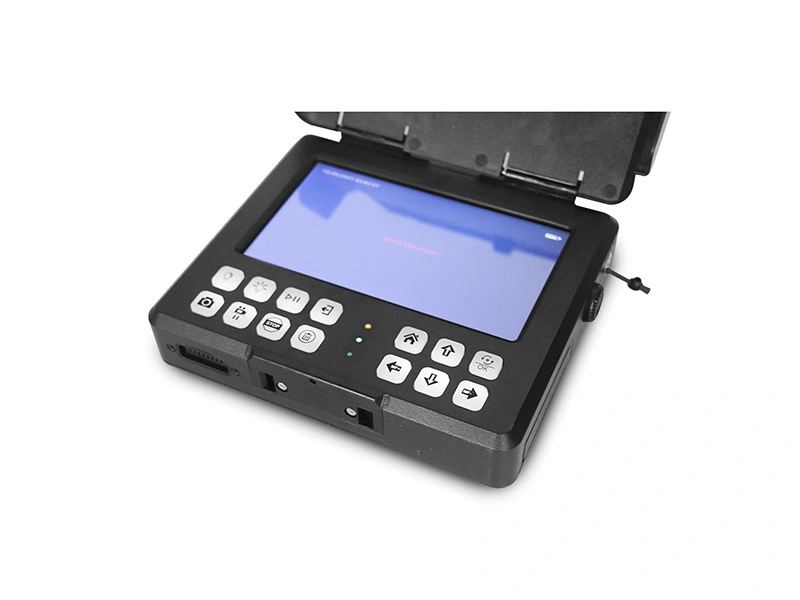Navigating the complex world of pipe inspection requires more than just a basic camera—it demands a complete system designed for reliability, versatility, and precision. Vicam Camera has developed a comprehensive range of inspection equipment and accessories that work together to provide complete diagnostic capabilities for professionals across multiple industries. From municipal wastewater systems to residential plumbing, industrial process piping to infrastructure maintenance, Vicam's integrated approach ensures that inspectors have the right tools for every scenario. This guide explores the full ecosystem of Vicam's pipe inspection camera technology, helping professionals understand how to build a complete inspection capability that delivers consistent, reliable results in diverse working conditions.
Core Camera Systems for Every Application
At the heart of Vicam's offering are their purpose-built camera systems, each designed for specific inspection challenges. The product range includes flexible pushrod systems for small-diameter pipes and lateral lines, featuring articulating camera heads that navigate multiple bends while maintaining image stability. For larger diameter applications, robust crawler systems provide stable platform for high-quality imaging in pipes ranging from 6 inches to several feet in diameter. Industrial-grade systems offer enhanced durability for challenging environments, while portable units provide flexibility for remote locations or quick assessments. Each system incorporates high-resolution imaging, professional lighting, and durable construction that withstands the demands of daily field use.

Advanced Imaging and Sensor Technology
Vicam's cameras incorporate sophisticated imaging technology that goes beyond basic visual inspection. High-resolution sensors capture fine details critical for accurate diagnosis, while precision optics ensure clear imaging regardless of pipe conditions. Advanced lighting systems provide uniform illumination that minimizes shadows and backscatter, revealing subtle defects that might otherwise go unnoticed. Many systems also integrate additional sensor technologies including laser profiling for precise measurement of pipe deformation and sediment accumulation, sonar capability for assessment of submerged pipes, and environmental sensors for parameters like temperature and gas concentration. This multi-sensor approach provides a comprehensive understanding of pipe conditions that supports informed decision-making.
Durable Cable and Deployment Systems
The quality of an inspection system depends significantly on its cable and deployment mechanisms. Vicam offers a range of professional-grade cable systems designed for specific applications, including flexible pushrods for lateral lines, steel-reinforced cables for crawler systems, and specialized cables for extreme temperatures or chemical exposure. Deployment equipment includes portable reels for manual operation, powered winches for larger systems, and specialized guidance systems for navigating complex pipe networks. These components are engineered for durability and smooth operation, ensuring reliable performance through countless deployments and retrievals in challenging conditions.
Specialized Tooling and Attachment Options
To address specific inspection challenges, Vicam provides an array of specialized tooling and attachment options. Articulating camera heads allow inspectors to examine specific areas of interest without repositioning the entire system. Rotating mirror attachments provide additional viewing angles in confined spaces. Specialized tools include cable cutters and retrieval devices for dealing with obstructions, distance measurement wheels for accurate location data, and protective housings for cameras operating in particularly challenging environments. These accessories enhance the versatility of the core systems, enabling professionals to handle unusual inspection scenarios and obtain comprehensive visual data from every inspection.
Professional Software and Data Management
The value of inspection data multiplies when effectively managed and presented. Vicam's software solutions handle the entire inspection process from data collection to report generation. The software automatically synchronizes video footage with distance measurements, allowing precise location mapping of defects and features. It enables real-time annotation of findings, capture of still images, and generation of professional reports that meet regulatory requirements and organizational standards. Advanced features include condition assessment grading systems, historical data comparison tools, and integration with asset management platforms. This comprehensive approach to data management transforms raw video into actionable intelligence that supports maintenance planning and decision-making.

Support Equipment and Field Essentials
Beyond the core inspection systems, Vicam offers a range of support equipment that enhances field operations. This includes portable power solutions for remote locations, monitoring and recording equipment for team viewing and documentation, transportation and storage cases that protect equipment during transit, and cleaning and maintenance kits that ensure long-term reliability. Field essentials like protective clothing, safety equipment, and documentation tools round out the complete inspection package. These support items might seem secondary but often make the difference between a smoothly run inspection and a problematic field deployment, particularly when working in challenging environments or remote locations.
Training and Technical Support Services
A complete inspection solution involves more than just equipment—it requires the knowledge to use it effectively. Vicam provides comprehensive training programs that cover equipment operation, inspection techniques, data interpretation, and report generation. Technical support services offer assistance with equipment questions, troubleshooting, and maintenance guidance. Regular software updates ensure that systems remain current with the latest features and compatibility requirements. This educational support helps professionals maximize the value of their investment while maintaining high standards of inspection quality. For many organizations, this ongoing support relationship proves as valuable as the equipment itself, providing confidence that help is available when facing unusual inspection challenges or technical questions.




Comments